Composting your food waste not only helps to reduce waste, but it can also benefit your garden and the environment by providing your plants, herbs, or vegetable garden nutrient-rich soil, rather than simply sending your compostable waste away in your green bin each week.
With the Lomi Composter, you can turn your food waste into extremely nutrient-rich compost, in a matter of hours, right in your own kitchen – although I recommend putting it in your utility room if that’s an option for you; I’ll explain why shortly.
In this Lomi composter review, I’ll explore the key features and benefits, how I’ve been using it in our garden, and ultimately, I will help you determine whether or not this countertop composter is the right choice for you – because although I believe it’s unequivocally worth it, $350 is still a lot of money.
Before we get into the review, if you’re trying to choose between different brands of indoor electric composters you should also consider the Reencle, which I’ve also tested and reviewed. It works in a very different way to the Lomi, which I go into more in my Reencle composter review. If you’re wondering how they compare, read my Reencle VS Lomi article next.
So, what is the Pela Lomi composter?
Let me try to explain what this appliance is, in a compostable nutshell (see what I did there…).
The Lomi countertop composter is a modern and innovative food waste composter designed to help reduce waste and create nutrient-rich compost from food scraps. However, it can make less nutrient-rich ‘dirt’ too, which is an excellent way to reuse that compostable waste, reduce/compact the size of the waste to be able to fit more in your green bin, and also keep it out of landfills which is a major contributor to global warming.
It is an attractive, compact, and efficient device that can sit comfortably on any kitchen countertop, making it easy to use, access, and also keep clean. It uses a unique and patented technology that accelerates the composting process.
This process takes around 16 to 20 hours to turn the waste into nutrient-rich compost – by the way, that’s the longest mode, which with the help of a Lomi’s compost accelerator, ensures that the soil coming out of the composter bucket is nutrient-dense, the other modes do things differently – more on that later though.

The Lomi operates in an almost odorless manner and has a sleek and stylish design, which means it will look great, even a modern kitchen. We have recently renovated our kitchen ourselves so this is important for us.
The Lomi Composter is essentially a great way, for households of any size, to reduce food waste, create nutrient-rich compost for your garden, and contribute to a more sustainable future.
How does the Lomi compost machine work?
The science behind this compost machine
There are some impressive engineering and biological sciences going into the design of this machine, and how it operates. The Lomi composting process uses heat and abrasion to break down unwanted food and compostable packaging, and it’s all done within a small machine that mimics natural composting at every stage, just much faster.
The first stage of Lomi’s composting process is grinding, which creates smaller food pieces that are easier for microorganisms to break down.

Then, Lomi creates an optimal environment for the natural decomposition process to take place, with sensors that ensure proper moisture content, warm temperatures, and plenty of oxygen in order to break down your food waste.
With three different modes to choose from, ‘Eco-Express’, ‘Lomi Approved’, and ‘Grow’, you can compost at varying speeds but not all modes can compost the same waste materials – I’ll go over what each mode does in a moment.
And get this, the three main stages of composting which consist of the mesophilic (moderate-temperature) phase, the thermophilic, (high-temperature phase), and the cooling phase usually takes several months to complete, but Lomi can complete them in just a few hours which I think is incredible!
The 3 different composting modes and how long they take

You can cycle through the different Lomi modes by holding the power button for a couple of seconds until the green light moves to the next mode – repeat that process to switch to another mode. Then when you want to start the composting process, just tap the same power button again and the machine gets to work.
Lomi has three different modes, allowing you the freedom to choose the one that best suits your output requirements and schedule.
These are the 3 modes, and what they do:
- Eco-Express mode: This mode is the fastest and takes 3-5 hours to complete. Eco-Express is meant for general cooked or raw food waste and is the best mode for those wanting the fastest result and lowest energy consumption. You can add this soil to your green bin (if your community has this program), or you can add it to the next cycle that you run with Lomi! Note: Do not put bioplastics, compostable commercial goods, or packaging in this mode.
- Lomi Approved mode: This mode takes 5-8 hours to complete and is meant for food waste, bioplastics, and Lomi Approved packaging and products. Lomi recommends a ratio of 1:10 bioplastics to foodstuffs and to make sure that you use a LomiPod when running this mode.
- Grow Mode: This takes 16-20 hours and is meant only for fruit and vegetable waste and cannot process bioplastics or processed/cooked foods. This mode runs at a low heat setting to preserve the microorganisms that are beneficial in creating nutrient-rich dirt. Be sure to also add a LomiPod when running this mode for the best results. Note: Do not put bioplastics, compostable commercial goods, or packaging in this mode.
My honest thoughts and experience after using Lomi for 1 month
Okay, let’s get into my experience actually using the Lomi countertop composter for nearly a month now.
Design, build quality, and thoughts on general use
I have to say, the design, and build quality are both of a very high standard, and the appliance has a real sense of ‘premium’ to it as you can hopefully see from some of my product photos.
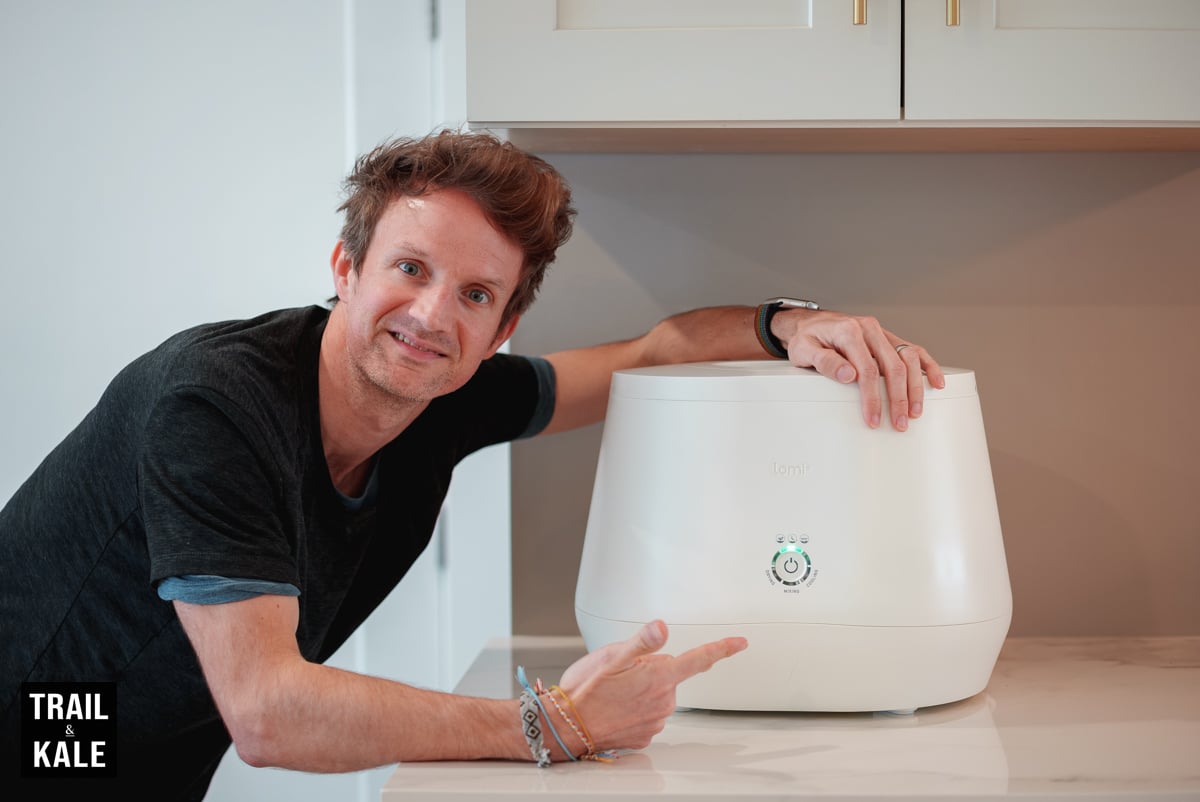
The external color of the Lomi is an off-white cream, and although I did at first wish it was a brilliant white color to match our other white appliances and white cabinets more closely, I am finally over that initial trauma, haha. Yes, I’m a bit of a perfectionist when it comes to design and layout in our household.
The lid is solid and firm to twist on (and off), giving me confidence that it has locked in place and created a solid seal, and that no bad odors will exit the machine from the top of the machine.

While I’m talking about the lid, Lomi does also sell a clear lid on their website called the Skylight lid.
I really wish they would sell this as a standard base model feature with every Lomi because I think kids and anyone interested in the composting process would really enjoy watching their food scraps decompose over time because let’s face it, it is pretty fascinating!
A clear lid would also give users a better idea of how much longer the current cycle has remaining until completion because there’s no way of knowing right now. Maybe Lomi will add this functionality to their App at some point, but right now the app is very basic, and I chose not to use it after downloading it to my iPhone at first.
It’s just too limited and not worth the space on my iPhone screen real estate – plus I have way too many apps already, I don’t need another one for food composting. Although, having said that, if the functionality were better, maybe I’d change my mind and re-download the Lomi app.
Another way I think Lomi could help us in knowing how much longer a cycle has remaining, and that would be to add a little LCD display on the front of the machine with an estimated time of completion countdown timer on it.
I soon realized that knowing when the cycle will complete would be super useful when I ran my first cycle which happened to be the ‘Grow mode’.
The composting process was louder than I was expecting it to be and I wanted to know whether the noise would continue into our evening TV show time. It did.
Had I known how noisy the machine was going to be, I’d have started the cycle in our utility room which is further away and doesn’t share the same open-plan space that our living room and kitchen do. And no, I couldn’t just pause it and move the machine to our utility room because the cycle has to start from the beginning if you open the lid mid-cycle or the power is interrupted, yes that includes a power cut.
Ease of use and maintenance
The Lomi is extremely easy to use, I mean there’s just 1 button on the front, which you use to change modes, and start the composting mode of your choice. The first challenge I had at first was knowing which mode to use and what food scraps I could actually put in the machine.
Once you’ve gone through the initial phase of learning what the machine can or can’t do (as outlined above in the Lomi Modes section), the process of knowing what to put in it becomes second nature.
If you decide to buy one of these smart composters I have no doubt that you too will soon realize that we are generally creatures of habit, and we only have a few specific foods that we eat on a monthly, weekly, or daily basis.

For me, my organic waste tends to be things like vegetable scraps/peelings, coffee grounds, tea bags, eggshells, unfinished cat food scraps (yes you read that correctly, we have ungrateful fussy cats, and yes, you can actually compost leftover pet food on the ‘Eco-Express mode’, lol – more on that later), orange peel from freshly squeezed fruit juice, banana skins, and the list goes on but does eventually finish.
Like I said, we tend to eat the same foods each month, so by the end of your first month using a Lomi, you do come to know instinctively what goes in there, and I like to use my mine to create nutrient-rich soil to ensure our backyard plants’ soil stays healthy.

The other challenge I needed to overcome was that right now, we are a household of only two adults and soon to be one baby (PLUS two cats and a dog), so we don’t create enough food scraps to warrant using a Lomi cycle every day – so how do you store that food waste until you need to compost it without it stinking out your house?
We would rather save electricity and run a ‘Grow mode’ cycle when we have enough food scraps to fill the compost bucket before running a composting cycle.
The solution I came up with was to store food scraps in a Tupperware box that is roughly the same volume as the Lomi compost bucket which has a max capacity of 3L to the max-fill line, and store it in the fridge until it’s full, at which point I start a composting cycle.
By the way, if storing up your scraps ready to run a composting cycle doesn’t appeal to you, but you don’t want a standard backyard compost pile (which can take months to break these foods down) you should definitely consider the Reencle composter. That machine works differently to the Lomi in that it sits in your kitchen/utility and is always on, so you can throw scraps in right away without storing them up (learn more in our Reencle review).
Capacity and composting output

The compost bucket, in which you put your organic food waste, has a max capacity of 3L to the max-fill line, which for us is enough volume for about 3 days worth of food waste.
Is the Lomi Composter noisy?
Here we go then, this is my biggest gripe with this particular composter, as an appliance that’s designed to ideally live on your kitchen countertop.
If you have a kitchen layout like ours, where you have an open-plan layout where your kitchen and living room share space, then you can’t feasibly use your Lomi if you plan to watch TV or simply relax in your living room in peace while it’s running. The machine does produce noise for most of its cycle, which in the Lomi Grow mode could last up to 20 hours.
Our solution is to store the Lomi in our utility room next to our washer/drier machines, and a ‘door close’ away from our kitchen/living room space.
If you intend to only use the ‘Eco-Express’ or the ‘Lomi Approved’ mode which are both shorter, then you could easily have the machine run overnight whilst you sleep but a ‘Lomi Grow’ mode cycle can take up to 20 hours, so it’s almost impossible to avoid having it run during a time when you may want to use your kitchen or living room area.
If you have a kitchen that is closed off from the rest of your house then you won’t have a problem with the noise levels because you’ll most likely be cooking whilst the machine is running and it won’t bother you. If you have any questions or concerns about noise levels, just let me know in the comments. You can also watch my video review below which gives an indication of noise levels too.
Does it produce any odors?
I noticed a very subtle but not unpleasant odor the first time I used my Lomi countertop composter but I haven’t noticed any smells or odors on consequent composting cycles.

The Lomi has two filters on it, designed to reduce the smell associated with decomposing food, and I have to say it does an amazing job of doing so – there’s really no smell at all.

This product would be totally useless if it did smell however because it’s designed to be used indoors and old food odors would attract fruit flies and other pesky insects much like a traditional compost pile or compost bin does.
The filters should last between 3-6 months depending on how often you use the machine.
Cleaning the Lomi composter
Cleaning it after a composting cycle is a very easy process.
Firstly I remove the compost bucket from the machine and then transfer my freshly made nutrient-rich dirt to a Tupperware box ready for mixing into my plants’ soil which by the way you should make sure you have a 1:10 ratio of Lomi dirt to existing soil to get a really healthy mix of new soil. Then I rinse the bucket under the kitchen tap and give the edges a little scrub where dried compost can get stuck, and then place it in the dishwasher for a thorough clean, ready for the next cycle a few days later.
Sometimes the lid will get a little bit of dirt or food waste on the inside if you have a full bucket when you start your cycle. To clean the lid, I just give it a spray with Blueland Multi-Surface cleaner (a very affordable, subscription-based eco-friendly cleaning product), and wipe it down with a damp cloth. That’s it, super simple.
Some benefits of using the Lomi compost machine

There are a few key benefits to using a composting machine at home:
- You get to reduce waste and your carbon footprint
- You get to produce nutrient-rich compost much faster than a standard compost pile in your backyard or garden would achieve
- Over time you will save money on fertilizers and soil conditioners
- Yes, there’s an upfront cost of buying a Lomi but it’s nice to know you’re making a difference to our planet and you get compost you can actually use rather than just shipping scraps off in your municipal green bin.
Where to buy the Lomi Composter
You can buy it directly from the Lomi online store, or Amazon.com but right now Lomi is offering a much better price of $349.30 ($150 saving), whereas Amazon’s price is currently $499.
Review Summary
Since using the Lomi, I have had a real appreciation for saving food scraps and turning that waste into nutrient-rich fertilizer for our citrus tree, and garden plants.
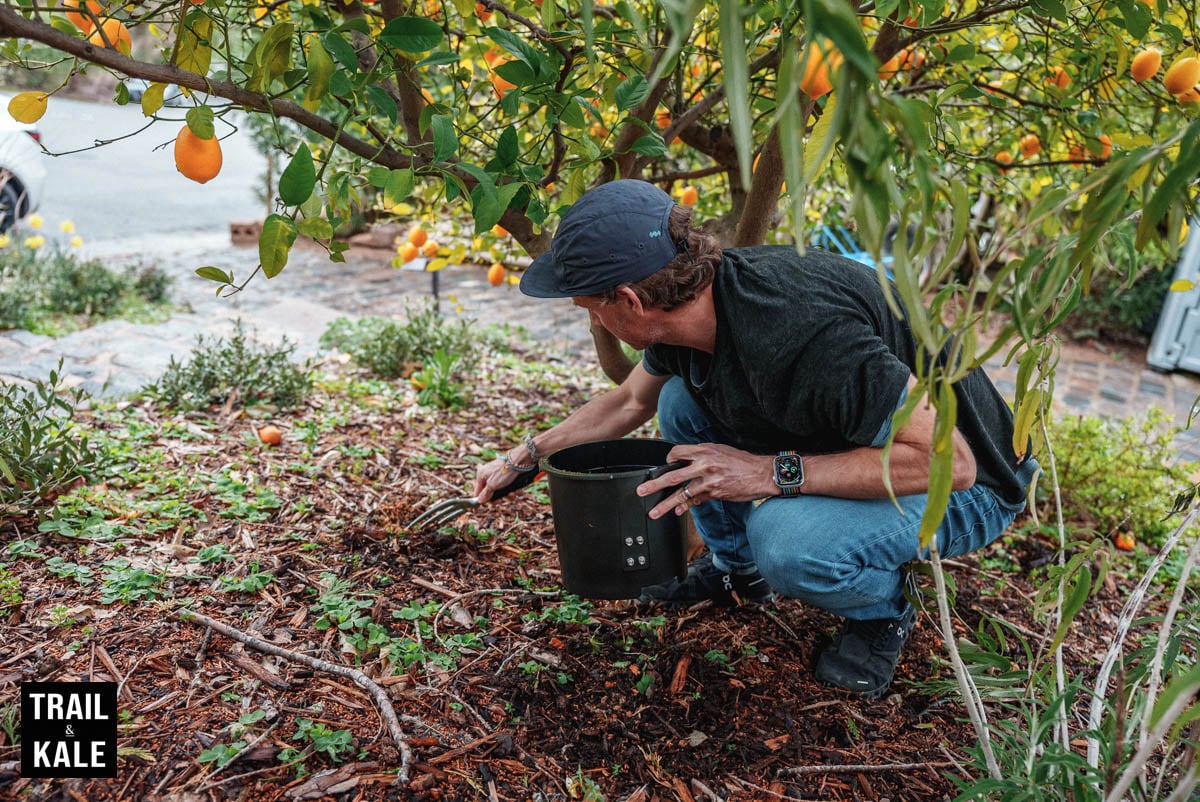
I plan to build a vegetable patch and vertical herb garden in our backyard in the coming months and I’m really excited to see more of our food waste being put to good use to feed our organic vegetables, fruits, and herbs in the future.
Lomi Composter Video Review
Image Gallery
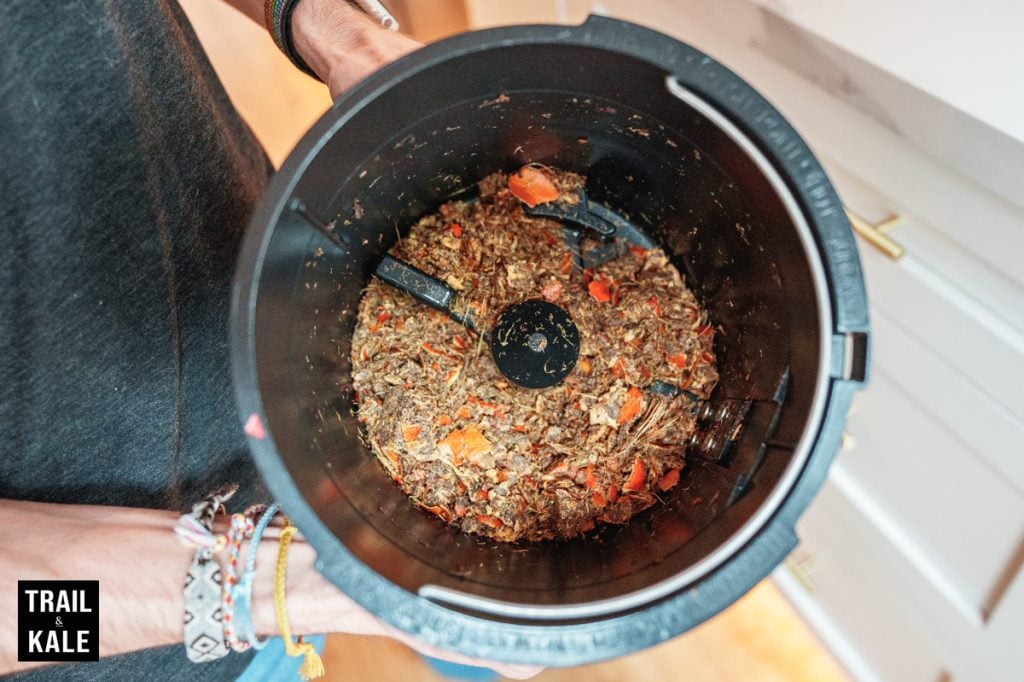


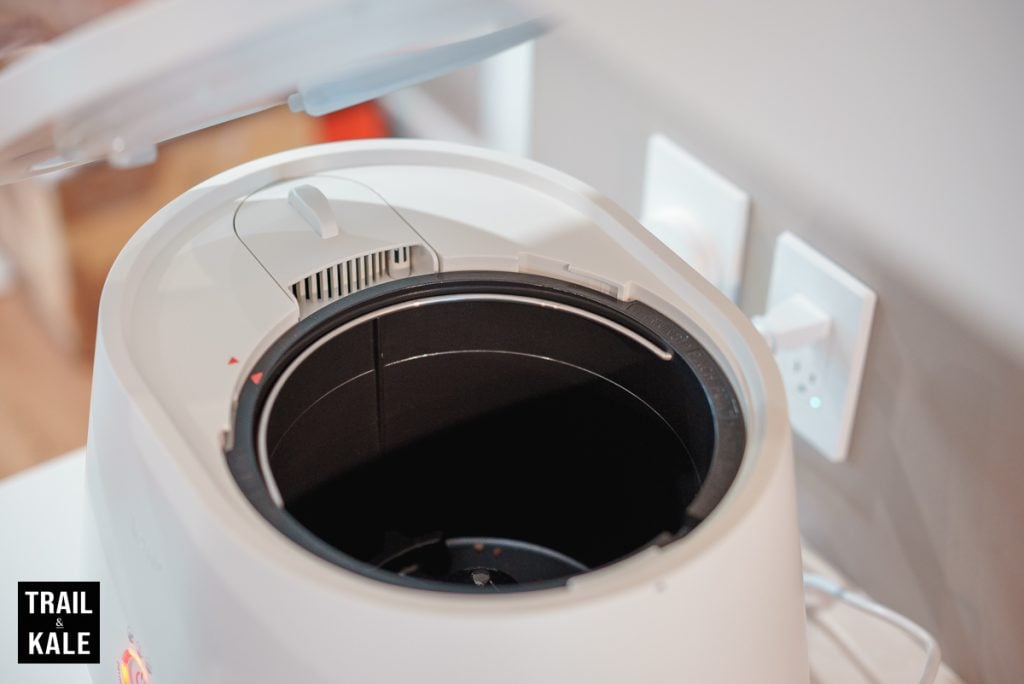
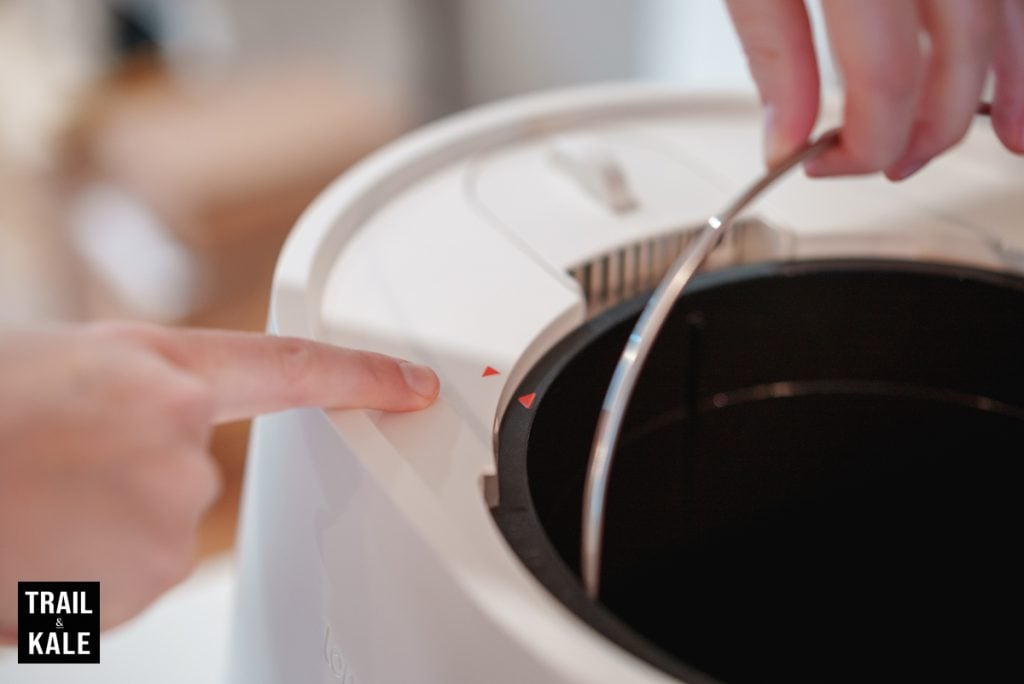
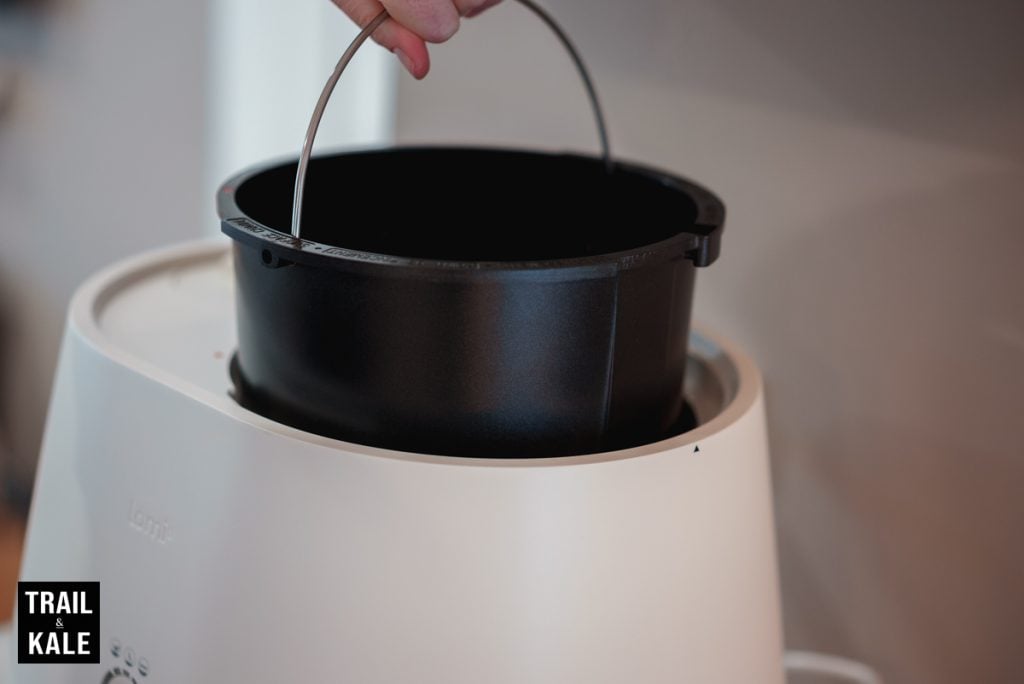
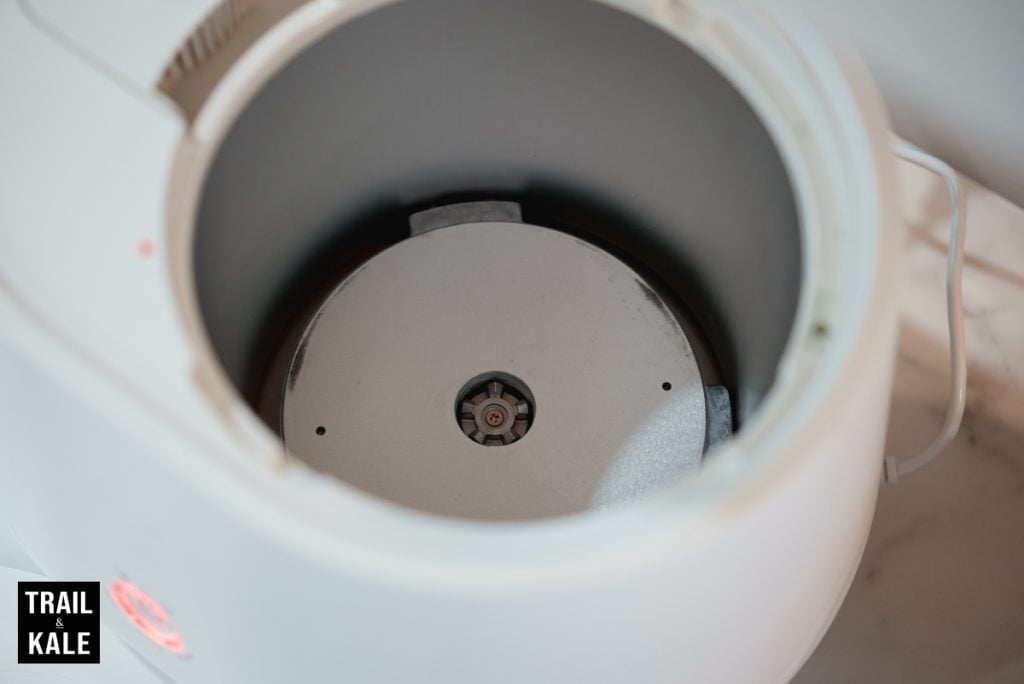

Answering some more questions that you may have
Lomi has a great support site to help answer any additional questions that you may have if you purchase one but these are the questions I had been asking myself, so I had to test features for myself or research the answers I couldn’t get on my own.
Lomi composter vs. traditional composting methods
Traditional composting usually involves setting up a large outdoor compost bin or pile, which can take up a lot of space and require regular maintenance, such as turning the pile and monitoring the moisture content.
Traditional composting can also take several months to complete, depending on the type of waste being composted, the temperature, and other factors BUT it’s totally free! The Lomi countertop composter, on the other hand, is a small and convenient machine that takes up minimal space on your kitchen counter.
It uses a unique combination of heat and abrasion to quickly break down food waste into nutrient-rich soil in just a few hours, compared to several months with traditional composting methods but there is an upfront cost of $350 $500 for the machine.
Lomi compost machine alternatives
There are a variety of alternative compost machines available on the market, each with its own unique features and benefits. Here are a few examples:
- Vitamix FoodCycler: This countertop composter uses a similar process to the Lomi, using heat and agitation to break down food waste into compost in just a few hours.
- Breville FoodCycler: The FoodCycler operates an automated program drying, grinding and cooling to reduce food scraps into odorless EcoChips™.
- FCMP Outdoor IM4000 Tumbling Composter: For those who prefer traditional outdoor composting, this tumbling composter allows you to easily turn your compost and speed up the composting process.
What are the dimensions and weight of the Lomi Composter
The machine itself measures 16″ W x 13″ D x 12” H or 228mm W x 388mm D x 314mm H and I can confirm it fits comfortably on a kitchen counter and can be slid under cabinets.
Lomi weighs about 9kgs (19-20lbs).
How much food waste can this composter hold?
The composting bucket has a max capacity of 3L which for us is enough volume for about 3 days’ worth of organic waste.
What kind of waste can you put in it?
There’s a pretty long list of what you can and can’t put in this composter but I’ll list the most popular ones; please refer to Lomi’s website for the full list.
These are some popular items you CAN always compost:
- coffee grounds
- eggs (and eggshells)
- fruit and vegetable scraps
- leafy greens
- legumes
- soft peels
- oats
- plant trimmings and yard waste
- seafood
- tea
These items should NOT be added to “Grow Mode” – that’s the mode for nutrient-rich soil:
- cooked foods
- fish bones
- dips (non-dairy)
- grains
- granola
- meat scraps
- nuts & seeds
What can I use to store food waste for a few days to accumulate enough waste before starting a composting cycle?
I’ve found a large tupperware container with a sealable lid is the easiest way to store and accumulate waste before putting it in the composter. We keep it in the fridge and as it’s only in there a few days at a time and the tub is sealed, it doesn’t stink the fridge out.
How much electricity does it consume?
Lomi uses a relatively low amount of electricity, so don’t worry about using it frequently as necessary depending on the amount of food waste you create. Overall, Lomi uses less than 1kWh on any cycle, which is less than a dishwasher cycle.
Here’s a breakdown of electricity usage during each mode:
- ‘Eco Express’ mode: less than 0.60kWh
- ‘Lomi Approved’ mode: less than 0.75 kWh.
- ‘Grow’ mode: uses around 1 kWh
Are Lomi composter customer reviews good or bad overall?
Overall the Lomi reviews I have read on the internet have overwhelmingly been good and they do seem to correlate with my thoughts expressed in this review, especially regarding the noise level which seems to be the thing that most people pick up on but other than that, the Lomi works just as advertised.
Do you need to use compost accelerator pods every time?

No you don’t, however, whenever you run a Grow or Lomi Approved cycle, the brand strongly recommends adding a compost accelerator pod (and 50ml of water).
Can you compost biodegradable packaging and cutlery?
Yes, you can, as long as the packaging is Lomi-approved packaging or bioplastics.
How much charcoal do you add to the filter containers?
Fill them up to the top with the charcoal pieces, if you can’t get the lids back on the filter containers, you’ve put too much in.
You can order more charcoal refills for both filters from the Lomi website when you need them.The image below shows what the charcoal bits look like:

What happens if there’s a power cut?
The current cycle will stop, and you would have to start the cycle from the beginning when the power comes back.
Can you open mid-cycle?
Yes, you can open the lid mid-cycle but the current cycle will not pause and resume when you put the lid back on. You will have to start the cycle from the beginning again.
How do you know how long the cycle will take, as there’s a range of time to completion?
As far as I can tell, there’s no real way to know, other than setting a timer for yourself but even then the estimated cycle times vary wildly.
I really hope you enjoyed reading my Lomi compost review and that it gave you some ideas about how you could be using your own at-home countertop composter like the Lomi.
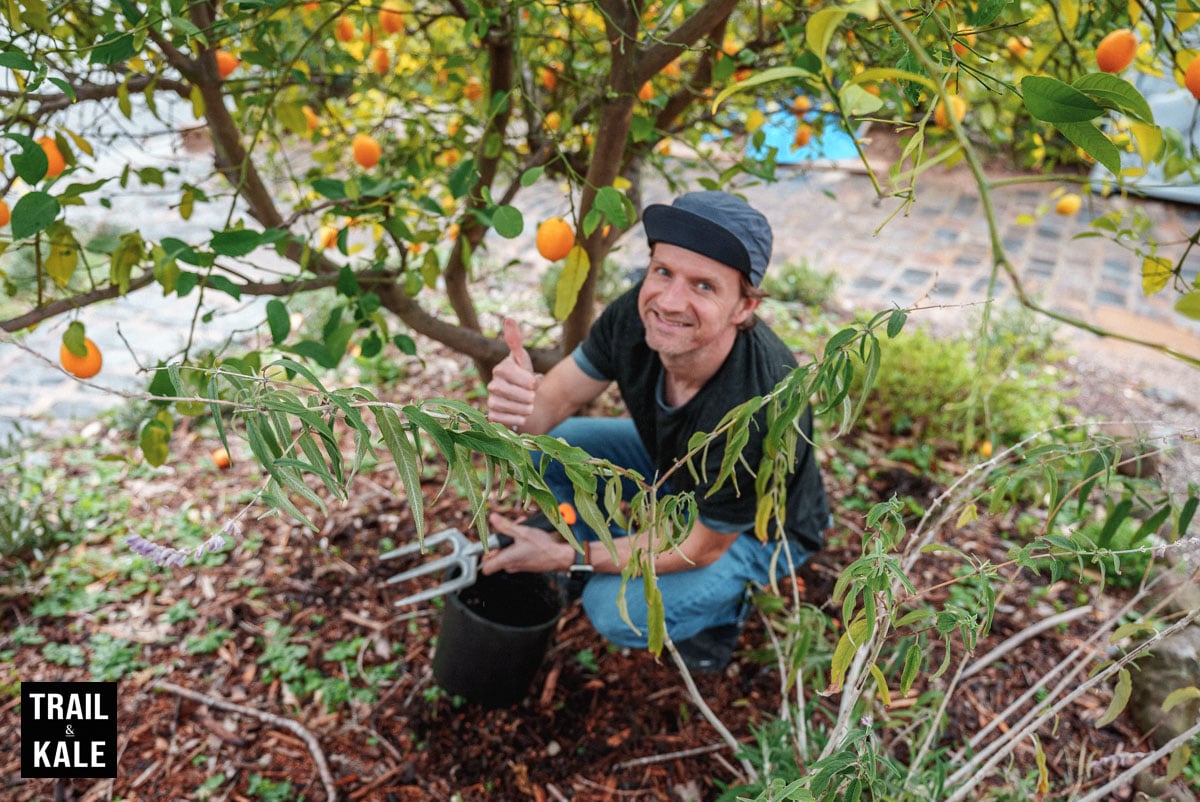
Composting your food waste and growing your own herbs and veggies is a great way to reduce waste, save money, and have fresh, organic produce at your fingertips whether you need cocktail ingredients, herbs, and spices for your meal recipes, or just enjoy eating lots of organic fresh vegetables like me.
Turning your food scraps into nutrient-rich soil is also a win-win for you and the environment, so why not join the composting community and start your own compost bin or invest in a countertop composter like the Lomi?
If you’re already an avid compost enthusiast or plan to buy a Lomi composter, share your top tips for at-home composting or how you plan to use your new, nutrient-rich dirt in the comments below!





